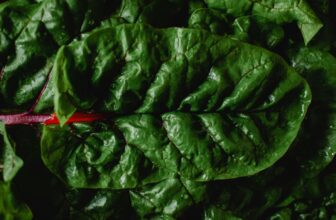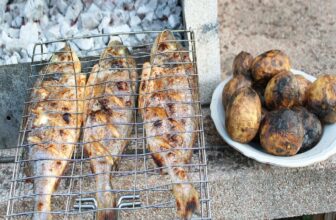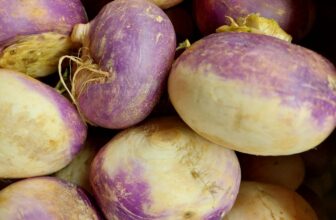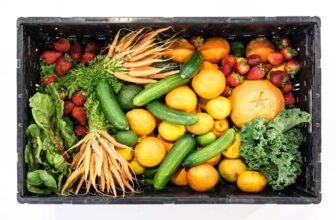If you’re a prepper looking for a versatile and highly beneficial plant to include in your survival garden, look no further than the Moringa tree. Known as the “miracle tree,” Moringa offers a wide range of benefits that make it an excellent choice for preppers. In this article, we’ll explore why planting Moringa trees wherever you can is a good idea from a prepper’s point of view.
The Miracle Tree
Moringa, also known as the drumstick tree, horseradish tree, or ben oil tree, is native to the Himalayan foothills of India and Bangladesh. It has gained popularity worldwide due to its incredible nutritional and medicinal properties. Preppers, in particular, find Moringa trees highly valuable because they can provide sustenance and essential resources during challenging times.
Nutritional and Medicinal Benefits of Moringa
Moringa trees offer various nutritional benefits, making them an excellent addition to any prepper’s survival garden. The leaves, seeds, and pods of the Moringa tree are rich in essential vitamins, minerals, and antioxidants. They contain significant amounts of vitamin C, vitamin A, calcium, potassium, iron, and protein. Consuming Moringa leaves or incorporating them into meals can help boost immunity, improve overall health, and provide vital nutrients in times of scarcity.
Moreover, Moringa has been used for centuries for its medicinal properties. Its anti-inflammatory, antimicrobial, and antioxidant properties can aid in the treatment of various ailments. From managing digestive disorders to alleviating joint pain, Moringa has proven to be a natural remedy for several health conditions.
Fast Growth and Adaptability
Moringa trees are renowned for their rapid growth. With a growth rate of at least 12-15 feet annually, Moringa is one of the fastest-growing trees. This characteristic makes it an excellent choice for preppers who want to establish a sustainable food source quickly.
Another advantage of Moringa trees is their adaptability. While they are native to South Asian tropical and subtropical climates, they can thrive in other regions. This adaptability allows preppers in various climate zones to cultivate Moringa trees and benefit from their valuable resources.
Drought Resistance and Water Conservation
In times of drought or limited water availability, Moringa trees excel at conserving water and surviving under arid conditions. Once established, moringa trees are drought-resistant and can tolerate extreme temperatures as high as 118 degrees Fahrenheit. This resilience makes them an ideal choice for preppers who may encounter water scarcity during survival situations.
Easy to Grow and Low Maintenance
For preppers seeking low-maintenance plants for their survival gardens, Moringa trees are an excellent option. Established Moringa plants require little care, especially if grown outdoors in tropical or subtropical climates. They are naturally low-maintenance and can thrive with minimal intervention.
Moreover, Moringa trees adapt well to container growing, making them suitable for preppers with limited garden space. With a large enough container, you can grow Moringa trees on balconies, patios, or even indoors. This flexibility allows preppers in urban environments to benefit from Moringa’s valuable resources.
Multiple Uses of Moringa Trees in a Survival Situation
One of the most compelling reasons for preppers to plant Moringa trees is their multitude of uses in a survival scenario. You can utilize every part of the Moringa tree, making it a valuable resource for food, medicine, and various other purposes.
The leaves, rich in nutrients, can be consumed raw, cooked, or dried and powdered for long-term storage. You can use Moringa leaves to make tea, add to soups, stews, or salads, or use them as a nutritious garnish.
The seeds of the Moringa tree can be pressed to extract oil, which has numerous applications. Moringa oil is edible. It is great for cooking while also possessing medicinal properties. Additionally, Moringa oil is an excellent source of biodiesel.
The bark, roots, and flowers of the Moringa tree also have medicinal properties, which make them a great source for making herbal remedies, teas, or tinctures.
Availability and Accessibility of Moringa Trees
Moringa trees are widely cultivated in developing countries, including Africa, South America, Asia, and the Caribbean Islands. However, their popularity is not limited to these regions. Moringa Oleifera is gaining recognition in the United States, particularly in areas prone to drought.
The availability and accessibility of Moringa seeds or seedlings are relatively high. One can easily produce them from various sources, including online platforms, making it convenient for preppers to obtain and start growing their own Moringa trees.
Planting and Growing Moringa Trees
To plant and grow Moringa trees successfully, there are several key considerations. They prefer a sunny location that receives direct sunlight for most of the day. Well-draining, sandy soils are ideal for their growth, although they can adapt to a wide range of soil conditions. It’s important to keep the soil consistently moist but not wet. Moringa plants are sensitive to overwatering.
Those living in areas with harsh winters can grow these plants in containers and bring them indoors during cool weather. This flexibility allows preppers in colder climates to cultivate Moringa trees and benefit from their valuable resources.
Planting these trees is a wise choice for preppers seeking a versatile, low-maintenance, and highly beneficial plant for their survival gardens. The nutritional and medicinal benefits, combined with the tree’s adaptability, fast growth, and multiple uses, make Moringa Oleifera the ultimate survival tree. By incorporating Moringa into your preparedness strategy, you can ensure a sustainable food source, essential nutrients, and valuable resources during challenging times.
FAQs
1. Can Moringa trees grow in cold climates? While Moringa trees are native to tropical and subtropical climates, they can be grown in colder regions by using containers and bringing them indoors during cool weather.
2. How long does it take for a Moringa tree to grow? Moringa trees have a rapid growth rate, reaching heights of 12-15 feet annually.
3. Can Moringa leaves be stored for a long time? Moringa leaves can be dried and powdered for long-term storage, allowing you to enjoy their nutritional benefits even during non-growing seasons.
4. Are there any known side effects of consuming Moringa? Moringa is generally safe for consumption. However, we recommend consulting with a healthcare professional, especially if you have any existing medical conditions or are taking medications.
5. Where can I obtain Moringa seeds or seedlings? Moringa seeds or seedlings can be purchased from various sources, including online platforms and nurseries specializing in rare or exotic plants.




